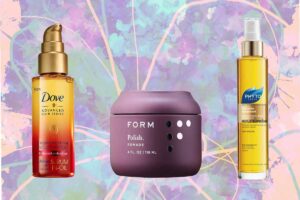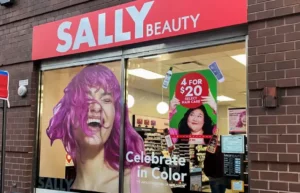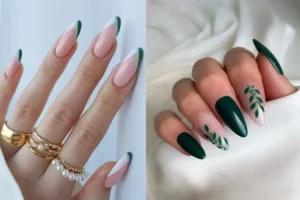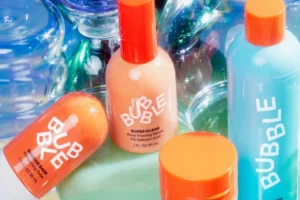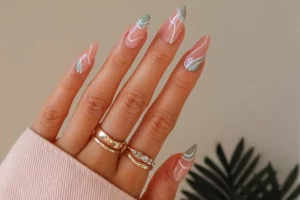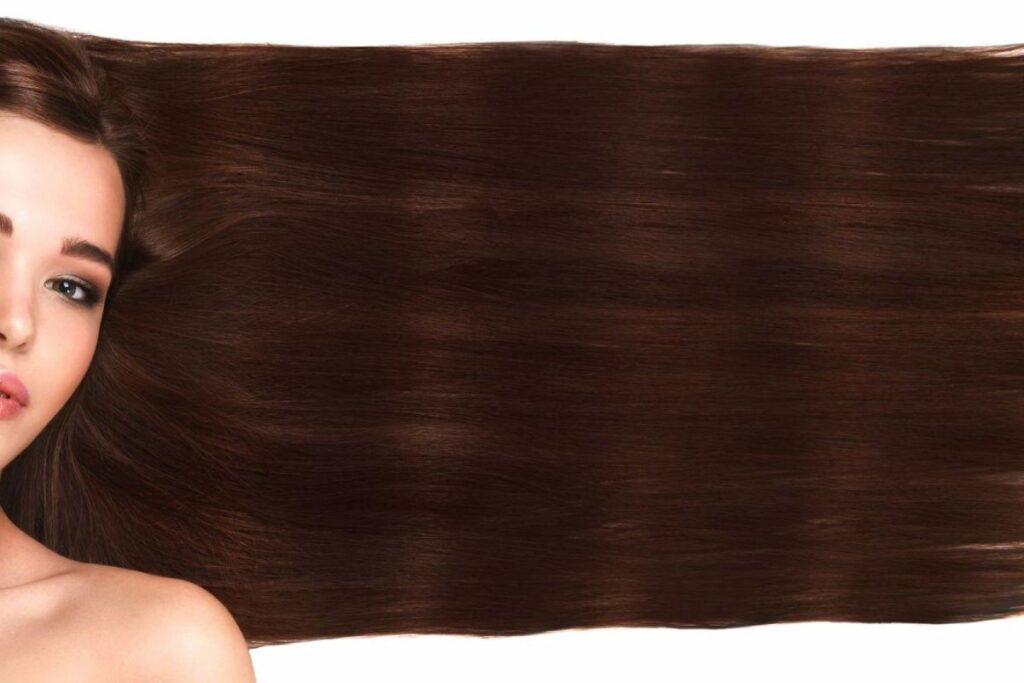
Loreal-hicolor – It is a long-lasting hair color designed especially for dark hair (dark brown to black). You may get the dye over the counter and apply it at home. The vivid color is imparted in only thirty minutes without pre-lightening.
L’Oreal HiColor easily damages your hair. With only one step, L’Oreal HiColor may transform your hair from dark black to vivid red, violet, magenta, blue, or even blonde.
The most significant benefit is that the technique avoids using bleach, which seriously harms hair. Unfortunately, a common misconception is that L’Oreal HiColor can’t harm your hair because it doesn’t include bleach. Nothing could be farther from the truth.
Your hair does change after using hair color. To usual permanent, hair color has to penetrate the cuticles, which serve as the hair’s natural defense. Peroxide removes the original hair color once the dye has penetrated the cuticles so that the new pigmentation may take hold. So, two things are occurring here: you’re removing your hair’s natural defenses and exposing it to peroxide, a drying agent, which can potentially harm your hair.
Is L’Oréal Hicolor Safe For Hair?
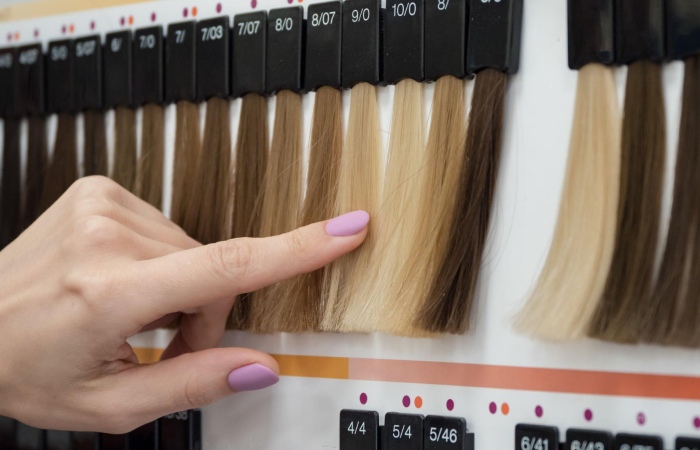
Regular conditioning and hair care should prevent visible hair damage from repeated dyeing. The damage is evident when the hair is dyed often or for an extended period. The hair’s cuticles get longer the color is kept on them.
The hair is more prone to experience further harm as a result. Overdying your hair may make it dry and brittle, leading to hair breakage. It’s only a rumor to think that coloring your hair might result in hair loss.
- Loreal HiColor Red Blonde highlights might appear odd on dark or black hair—top 5 L’Oréal HiColor Colours Breakdown 2. For the dark-haired girls, this explains why they may use so many additional colors to accent their hair. One of them has red accents. They look stunning with black hair! They might not appear natural, but they unquestionably give black hair more brightness and color.
- Violet Loreal HiColor
This one is for you, violet lovers. With dark hair, the color mixes wonderfully. Some reviewers advise using the color on lighter hair shades because it barely appeared on their black hair. However, the deep violet is a fantastic option for natural highlights.
3.Loreal HiColor Black
Consider a more vivid color, such as the red HiColor, if your hair is already black and you want to add some color. The black HiColor may not do much for black hair, but if you adore deep, dark colors and have medium brown hair, the black will give your locks a lovely, dark tone. Black is one of those hues that can completely change how something looks.
- Loreal HiColor Brown
The brown HiColors are ideal for anybody wishing to color their hair a natural, rich brown because they come in several tones. You may experiment with a different appearance by going lighter or darker if you’re naturally brunette. If not, the brown can nicely deposit on black.
- Loreal HiColor Blonde
Medium to dark brown hair can be lightened with sandstone blonde. The silky cream recipe gives hair a glistening sheen. In the comfort of your own home, you can get a sun-kissed appearance in less than an hour.
30 To 40 Volume Developer Are Needed For L’Oreal Hicolor

The company recommends mixing L’Oreal HiColor hair dye (check current pricing) with a 30 or 40-volume developer to remove the natural color from your strands. Things start to get hairy here.
There are numerous tiers of developers, including 10, 20, 30, and 40. The more lift and possible harm you can anticipate, the higher the level. When used with permanent hair color, the following developer strengths will be examined:
- Opens the hair cuticles actual slightly with developer 10 volume. Only a deposit is required, and there is hardly any lifting or damage.
- One to two levels of lift can be produced with a 20-volume developer, frequently used for minor color adjustments. After using 20 volume developer, some people discover that their hair is drier than usual.
- Produces 2 to 4 levels of lift and effortlessly covers greys with a 30-volume developer. A 30-volume developer may cause dry, brittle hair in certain people.
- A 40-volume developer produces full grey coverage and 3 to 4 lift layers. Use of this developer strength should be cautious owing to the possibility of breakage and damage.
You must be careful when coloring your hair with L’Oreal HiColor because it calls for a 30- or 40-volume developer. Look for breakage, extreme dryness, and more split ends.
L’Oreal Hicolor: How To Reduce Damage Before Dyeing
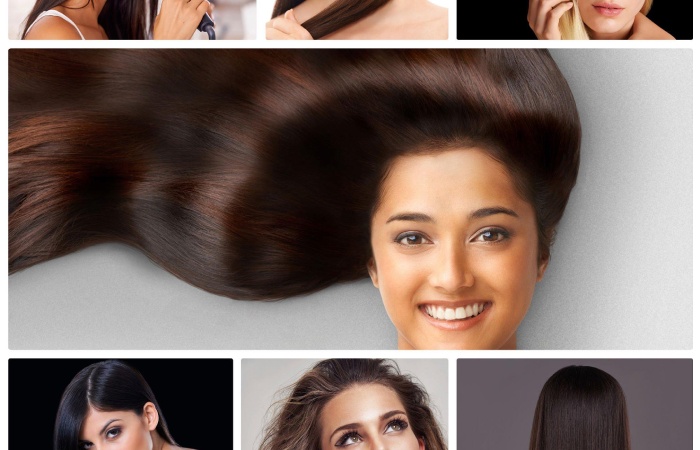
People frequently color their hair using hair dye and 30 volume developer; some can keep their hair healthy, while others cannot.
We advise that you adhere to the following procedures before dying your hair to give it the best chance of remaining healthy after processing.
Examine Your Hair.
Examine your curls before considering putting 30 or 40-volume developer to your hair and using powerful chemicals if you already have split ends, breakage, or chronic dryness.
If you drastically alter the color of your hair, serious harm may result. For instance, if you want to change your hair color from dark brown to deep red or a brighter hue, you’ll need to use a lightener (like bleach) and risk damaging your hair.
Avoid Harmful Styling Techniques
Within a week or two of coloring your hair, we advise against relaxing or using heat. The effects will be more significant the healthier your hair is before coloring it.
Avoiding high-manipulation styles like box braids and false locs is also intelligent. These types of hairstyles increase your hair’s susceptibility to coloring harm.
Avoid Washing Your Hair.
Before coloring your hair, could you wait a few days before shampooing it? You must keep your scalp’s natural oils (sebum) intact to shield it from the possibly harmful effects of high-lift color.
If you wash the sebum out of your hair just before coloring, there won’t be a barrier separating your scalp’s color from your hair.
Hair color and a raw scalp don’t get along, which frequently results in scalp redness, burning, swelling, and even hair loss.
Wash away any buildup on your hair caused by gels, pomades, or a flaky scalp a few days before the color day. Your scalp will have more time to create more healthy sebum that way.
Deep Condition And Moisturize
Before dying your hair, you must thoroughly condition and moisturize it for 24 to 48 hours and limit how often you wash it. It will fortify and moisturize your hair, lowering the likelihood of damage and dryness after the hair-dyeing procedure.
Carefully Read The Instructions.
One of the finest ways to prevent hair damage is to read and comprehend the L’Oreal HiColor packaging’s directions.
They will include instructions on how much developer and hair color to use, how long to keep the mixture on your hair, and other details.
If you read the directions and have questions, you can spend some time in advance to call the manufacturer or a stylist for help. You shouldn’t color your hair unless you’ve understood the directions thoroughly.
Execute A Strand Test
It’s time to do a strand test after you’ve prepared and read the hair dye’s packing instructions.
Everyone should take this action to avoid unfavorable outcomes and permanent hair and scalp damage. Follow the guidelines below to take the test:
To Safeguard Your Hands, Put On Some Gloves.
In a dish, combine one teaspoon of L’Oreal HiColor hair dye with 1 12 teaspoon of developer
Apply the color to a small area of hair towards the back of your head.
Rinse the hair color off the strand after approximately a half-hour, then let it air dry.
Take Notice Of The Following 24 Hours Later:
How it appears in the hair? Is that the color you were going for?
How does your hair feel? Is it soft and silky or brittle and damaged?
If the hair doesn’t bounce back after being stretched out, it has lost its elasticity.
You may confidently decide whether to proceed with the entire dye job, attempt an alternative color shade, or cut the processing time after doing the strand test.
Limiting Harm Following Dyeing
After using L’Oreal HiColor to color your hair, the strands will be porous and vulnerable to additional harm. If you perform the following actions to keep your hair as healthy and vibrant as possible, it will make a significant difference:
- Give your hair a break by limiting style, avoiding heat, and only washing it when essential. Additionally, keep your hair covered at night to maintain its moisture content.
- Condition often – After every wash, condition your hair and deep condition it at least once a week. Your parched strands will appreciate it.
- If you can’t avoid the heat, apply a heat protectant beforehand to create a defense barrier on your color-treated items.


